
On September 17, 2023, during the 45th session of the UNESCO World Heritage Committee, convened in Riyadh, Saudi Arabia, a meticulous evaluation was conducted, resulting in the meticulous selection of 54 historical caravanserais situated in 24 provinces throughout Iran. These exceptional sites were officially inscribed onto the prestigious UNESCO World Heritage List.
The extensive file of Iran’s caravanserais, which includes 54 historical inns located in 24 provinces, represents a curated selection from hundreds of such historical sites. As outlined in the documentation, these caravanserais serve as one of the most vital architectural manifestations in Iranian history.
They have played a pivotal role in the development of routes and travel-related needs over the years. The selection process for these 54 was thorough, comparing the layouts of up to 200 caravanserais, ensuring each chosen had a distinct design. This underlines the profound creativity and genius of Iranian architects throughout history.
Moreover, these Iranian caravanserais have been intricately woven into the fabric of societal and cultural evolutions. Their influence can be perceived across literature, poetry, paintings, miniatures, music, and of course, architecture. When compared internationally, the distinct design and structure of Iranian caravanserais stand out. It seems that many other types of caravanserais globally may have been inspired by the original Iranian models.
Contents
List Of All 54 Iranian Caravanserais On UNESCO’s World Heritage List
Here is the comprehensive list of all 54 Iranian caravanserais that have earned a coveted spot on UNESCO’s World Heritage List as of September 17, 2023. These listings were confirmed during the 45th session of the UNESCO World Heritage Committee, which convened in Riyadh, Saudi Arabia.
| ID | Name of Caravanserai | Coordinates | City |
| 1 | Deyr-e Gachin Caravanserai | N35 3 30.07 E51 25 12.49 | Tehran – Qom |
| 2 | Noushirvān Caravanserai | N35 46 14.63 E53 43 56.54 | Semnan |
| 3 | Āhovān Caravanserai | N35 46 13.94 E53 43 48.52 | Semnan |
| 4 | Parand Caravanserai | N35 27 29.62 E50 58 28.55 | Tehran |
| 5 | Robāt-e Sharaf Caravanserai | N36 15 59.65 E60 39 18.58 | Mashhad |
| 6 | Anjireh Ājori Caravanserai | N32 9 11.68 E54 28 37.59 | Isfahan |
| 7 | Anjireh Sangi Caravanserai | N32 9 43.96 E54 29 2.54 | Isfahan |
| 8 | Abbās Ābād Tāybād Caravanserai | N34 59 45.37 E60 43 6.12 | Taybad |
| 9 | Jamāl Ābād Caravanserai | N37 16 18.89 E47 50 35.16 | Tabriz |
| 10 | Qelli Caravanserai | N37 9 11.86 E56 55 14.67 | Gorgan |
| 11 | Fakhr-e Dāvūd Caravanserai | N35 59 59.59 E59 18 48.55 | Mashhad |
| 12 | Sheikhali Khān Caravanserai | N32 52 5.37 E51 22 13.45 | Isfahan |
| 13 | Maranjāb Caravanserai | N34 17 56.89 E51 48 44.59 | Kashan |
| 14 | Amin Ābād Caravanserai | N31 40 21.7 E52 4 6.41 | Yazd |
| 15 | Gabr Ābād Caravanserai | N33 46 6.96 E51 29 22.29 | Qom |
| 16 | Mahyār Caravanserai | N32 15 54.06 E51 48 35.04 | Isfahan |
| 17 | Gaz Caravanserai | N32 48 33.69 E51 36 33.56 | Isfahan |
| 18 | Kūhpāyeh Caravanserai | N32 42 48.35 E52 26 8.83 | Isfahan |
| 19 | Mazinān Caravanserai | N36 18 28.36 E56 48 23.19 | Semnan |
| 20 | Mehr Caravanserai | N36 17 4.53 E57 8 36.97 | Mashhad |
| 21 | Zafarāniyeh Caravanserai | N36 9 56.59 E58 5 10.43 | Mashhad |
| 22 | Fakhr Ābād Caravanserai | N34 44 40.69 E58 3 19.39 | Birjand |
| 23 | Sarāyān Caravanserai | N33 51 19.03 E58 31 4.86 | Birjand |
| 24 | Qasr-e Bahrām Caravanserai | N34 45 55.01 E52 10 37.69 | Isfahan |
| 25 | Mayāmey Caravanserai | N36 24 33.07 E55 39 11.88 | Semnan |
| 26 | Abbās Ābād Caravanserai | N36 21 40.39 E56 23 16.35 | Sari |
| 27 | Miāndasht Caravanserai | N36 25 41.27 E56 3 38.08 | Gorgan |
| 28 | Zeynoddīn Caravanserai | N31 24 42.69 E54 42 24.67 | Yazd |
| 29 | Meybod Caravanserai | N32 13 40.53 E54 0 33.1 | Yazd |
| 30 | Farasfaj Caravanserai | N34 29 16.68 E48 16 58.76 | Tuyserkan |
| 31 | Īzadkhāst Caravanserai | N31 30 48.11 E52 7 59.54 | Shiraz |
| 32 | Bisotūn Caravanserai | N34 23 04.32 E47 26 05.76 | Kermanshah |
| 33 | Ganjali Khān Caravanserai | N30 17 27.44 E57 4 44.17 | Kerman |
| 34 | Yengeh Emām Caravanserai | N35 56 10.63 E50 43 10.64 | Tehran |
| 35 | Khājeh Nazar Caravanserai | N38 58 38.8 E45 34 37.1 | Tabriz |
| 36 | Goujebel Caravanserai | N38 20 38.02 E46 51 48.06 | Tabriz |
| 37 | Sāeen Caravanserai | N38 0 3.76 E47 52 53.71 | Ardabil |
| 38 | Titi Caravanserai | N37 2 41.19 E49 54 8.05 | Rasht |
| 39 | Dehdasht Caravanserai | N30 47 17.53 E50 33 41.49 | Yasuj |
| 40 | Khoy Caravanserai | N38 27 57.6 E44 37 24.7 | Khoy |
| 41 | Bāgh-e Sheikh Caravanserai | N34 59 26.99 E50 26 49.04 | Qom |
| 42 | Neyestānak Caravanserai | N32 58 16.34 E52 47 57.71 | Isfahan |
| 43 | Chehel Pāyeh Caravanserai | N31 56 24.04 E57 8 25.47 | Kerman |
| 44 | Khān Caravanserai | N33 21 58.97 E56 4 13.49 | Yazd |
| 45 | Deh Mohammad Caravanserai | N33 59 29.62 E56 58 45.04 | Yazd |
| 46 | Tāj Ābād Caravanserai | N34 52 35.88 E48 13 14.62 | Hamedan |
| 47 | Chāh kūrān Caravanserai | N31 34 9.6 E56 51 0.61 | Yazd |
| 48 | Kharānaq Caravanserai | N32 20 41.81 E54 40 4.74 | Yazd |
| 49 | Rashti Caravanserai | N32 26 26.6 E53 37 51.79 | Isfahan |
| 50 | Borāzjān Caravanserai | N29 16 1.61 E51 12 29.73 | Bushehr |
| 51 | Chameshk Caravanserai | N33 14 16.64 E48 12 40.81 | Khorramabad |
| 52 | Afzal Caravanserai | N32 2 38.26 E48 51 7.66 | Ahvaz |
| 53 | Bastak Caravanserai | N27 11 54.6 E54 22 33.5 | Bandar Abbas |
| 54 | Saʿadossaltaneh Caravanserai | N36 16 9.46 E50 0 2.55 | Qazvin |
Each of these caravanserais carries with it a piece of Iran’s rich history and architectural brilliance, now globally recognized and preserved for generations to come.
The Significance of Persian Caravanserais
In the historical narrative of Iran, caravanserais hold a position of paramount importance. Located at the crossroads of ancient civilizations, Iran’s historical roads have played a pivotal role in shaping Persian civilization. From time immemorial to the present day, these routes have been cherished as key economic lifelines. Take, for example, the Silk Roads, an enduring corridor that played a vital role in the Persian Empire’s rich history.
One particularly renowned route, known as the Royal Road, dates back to the Achaemenid period. This road connected the empire’s main cities and contributed significantly to its prosperity. Throughout Iran’s history, an intricate network of routes crisscrossed the land, linking regions and facilitating trade. The Silk Roads, in particular, stand as a testament to the power of connectivity. These roads not only ushered in the exchange of goods but also facilitated the intermingling of ideas and cultures, ultimately shaping the world we know today.
Historical roads served multifaceted functions, featuring bridges, checkpoints, castles, bazaars, and most notably, caravanserais. Caravanserais, as integral elements of Iran’s historical roads, were more than just resting places for weary travelers and safeguarding their belongings. They were bustling hubs where travelers, merchants, scholars, and scientists converged to exchange knowledge, ideas, and embark on voyages of discovery into new civilizations.
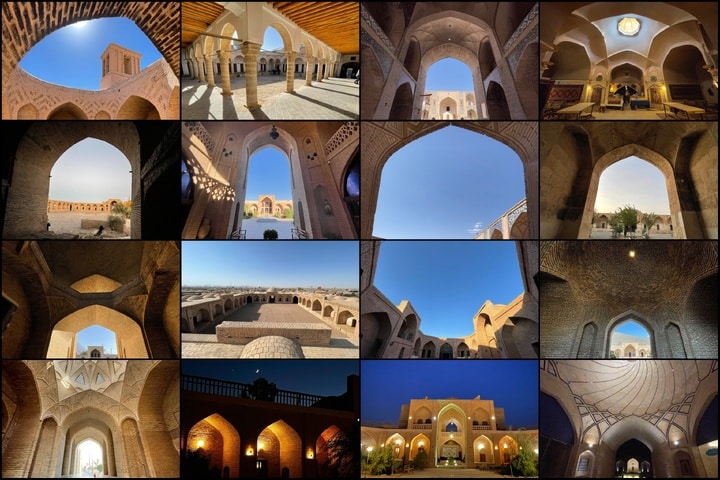
These historic routes formed a sprawling network of trade and cultural exchange, spanning the globe from ancient times to the modern era. Along these routes, people of diverse cultures, religions, and languages converged, fostering the exchange of ideas and influencing one another.
What makes Persian caravanserais truly remarkable is their resilience, uniqueness, and harmonious integration with the environment. Crafted using vernacular materials and techniques, these structures were strategically located to cater to travelers’ needs.
While many caravanserais are now found in cities and villages, historical studies suggest that they were the catalysts for the development of these settlements. In essence, the emergence of cities and villages along these routes owes much to the presence of caravanserais.
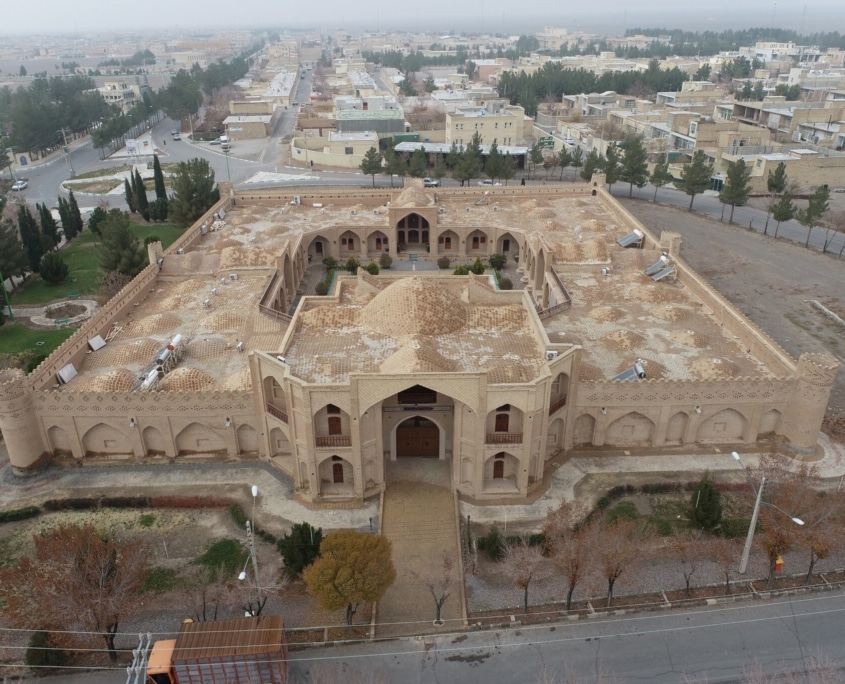
In summary, Persian caravanserais are far more than mere rest stops; they are the beating heart of historical roads that connected civilizations, fostered cultural exchange, and paved the way for the growth of communities. Their enduring legacy continues to echo through history, reminding us of the profound impact of these remarkable structures on Persian civilization and the world.
Some Fascinating Facts about Iranian Caravanserais
Origins
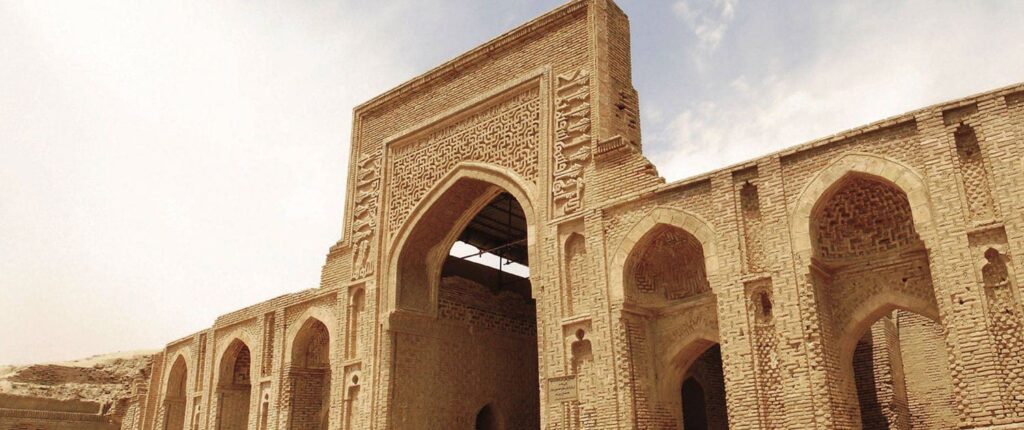
The word “caravanserai” comes from the Persian words “karvan” meaning caravan and “saray” meaning palace or dwelling. Thus, it’s a place where caravans rest.
Architectural Significance
Most caravanserais follow a quadrangular plan. The entrance is usually a large, ornate gate that leads into a central courtyard. Surrounding this courtyard are rooms and stalls for merchants, travelers, and their animals.
Safety and Rest
Caravanserais were built at intervals of 20-30 kilometers, which is roughly the distance a caravan could travel in one day. They served as safe havens against bandits and provided necessary shelter against harsh climatic conditions.
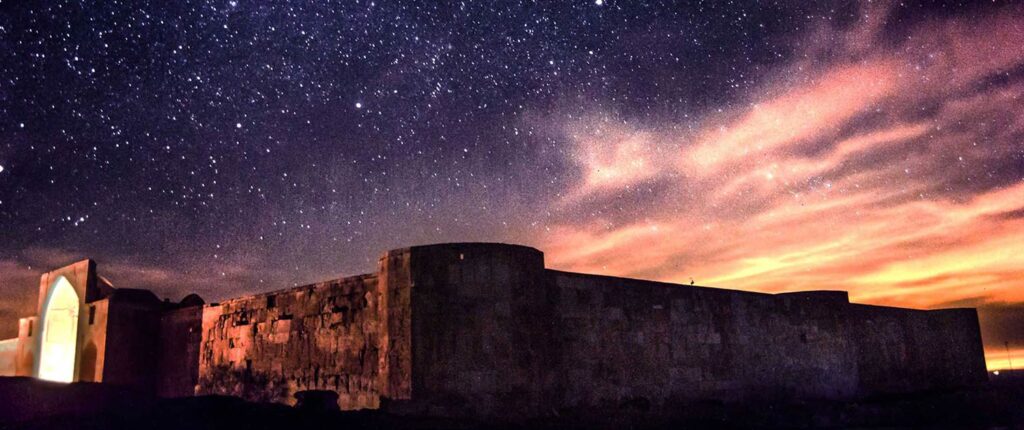
Spread of Culture
Beyond being mere resting places, caravanserais played an essential role in the exchange of culture. Travelers from different parts of the world would meet and share stories, goods, and knowledge, making these places melting pots of culture.
Incorporation of Religious Spaces
Many caravanserais had mosques built within them for travelers to perform their religious duties. This is a testament to the integration of religious, cultural, and commercial aspects of life during that era.
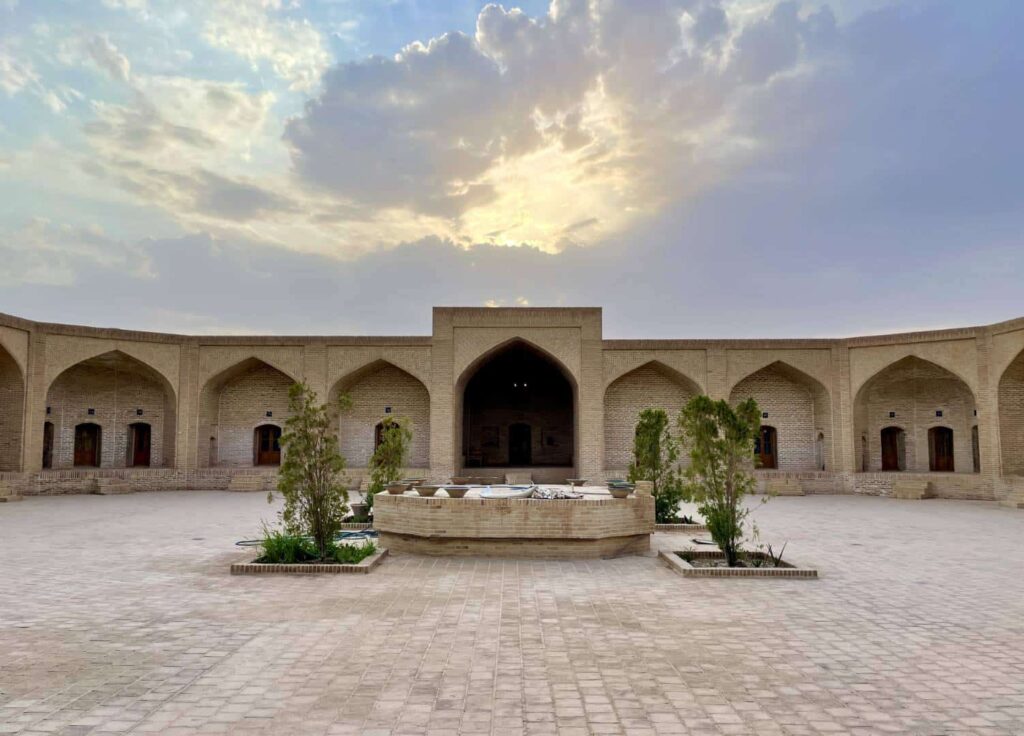
Economic Hubs
Apart from serving travelers, many caravanserais became bustling economic centers, hosting markets and facilitating trade.
Decline
The rise of modern transportation methods and improved infrastructure led to the decline in the use of caravanserais as primary resting and trading hubs.
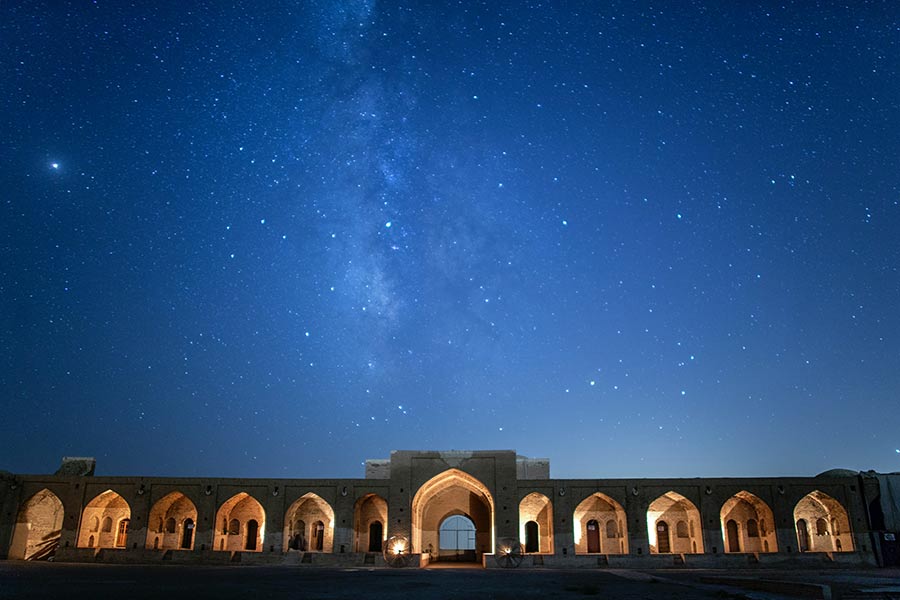
Preservation
Many caravanserais have been restored and converted into hotels, museums, or cultural centers to preserve their rich history. They serve as popular tourist attractions.
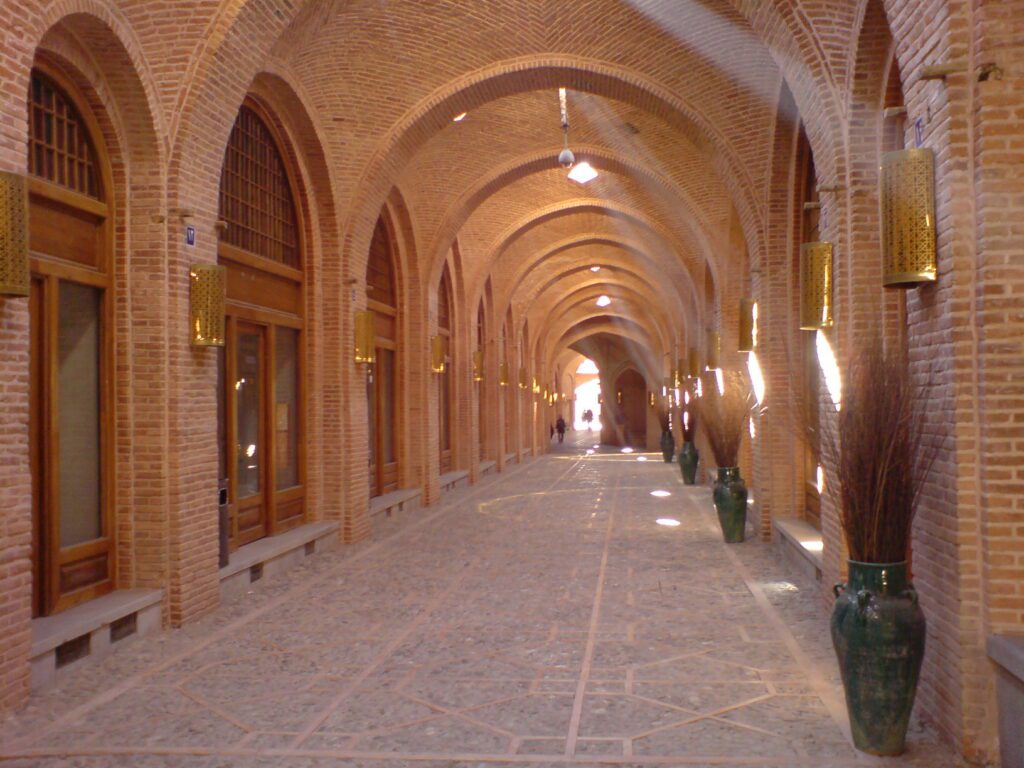
Diverse Designs
While there is a standard architectural format, many caravanserais differ in design based on the region, the era in which they were built, and the specific needs of the travelers they aimed to serve.
Safavid Era Flourish
The Safavid dynasty (1501-1722) in Iran saw a significant boost in the construction of caravanserais, primarily to promote trade and facilitate the movement of goods and people across the empire.



